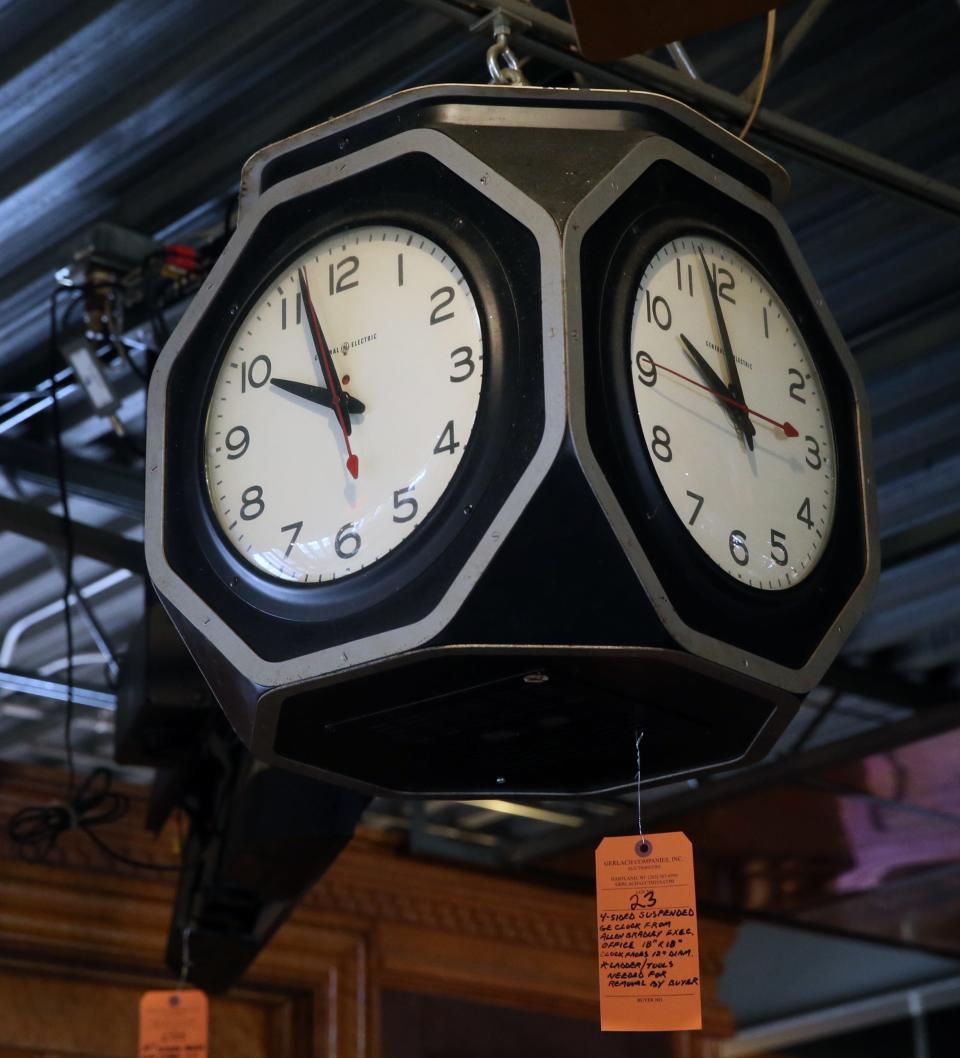When does daylight saving time begin in 2023 for Wisconsin? Here's what to know about springing your clocks forward.
- Oops!Something went wrong.Please try again later.
On March 12 of this year, Wisconsinites will lose an hour of sleep as clocks will spring forward in accordance with daylight saving time.
Here’s everything you need to know about why we have daylight saving time, who started it and whether we might soon get rid of it.

When is daylight saving time?
Each year, the start of daylight saving is the second Sunday in March and ends on the first Sunday in November — Nov. 5 this year.
Why do we lose an hour of sleep in March?
Since March 12 marks the start of daylight saving time, clocks will spring forward from 2 a.m. to 3 a.m. — meaning we will lose an hour of sleep due to the beginning of the daylight saving period.
Why do we have daylight saving time?
According to timeanddate.com, daylight saving time was created to maximize the amount of sunlight in the Northern Hemisphere, as days start to get longer in the spring and then shorten in the fall.
The intention is that daylight saving will add an hour of sunlight to the end of the workday, thus, helping to save fuel and electricity.
Who created daylight saving time?
Timeanddate.com explains that daylight saving was first conceived by New Zealand scientist George Vernon Hudson. In 1895, Hudson proposed a two-hour shift forward in October and a two-hour shift back in March, though his proposal never was adopted.
In 1916 Germany and Austria were actually the first countries to implement daylight savings, doing so as a way to preserve fuel and electricity during World War I. Shortly after, many countries in Europe would implement daylight saving time, but the U.S. would not make the change until 1918 — a year after they entered WWI.
Wisconsin resisted daylight saving time for decades
As the Journal Sentinel's Chris Foran reported in 2017: "In 1930, when some Milwaukee businesses started changing their clocks on their own, an odd alliance of farmers, labor and movie theater operators — worried "extra" sunlight would keep moviegoers outside — pushed the Legislature to up the ante. By 1931, not only was it illegal to impose daylight saving time in Wisconsin; a business operator could go to jail for doing so, with up to a $50 fine and as much as 30 days behind bars."
For the next 10 to 15 years there were almost annual attempts to roll back the law, but the Legislature refused to approve any change. After World War II, as more and more states allowed saving time to remain the law, business groups wanted Wisconsin to join them. A referendum was held in 1947 that would have let municipalities decide for themselves. It failed.
Finally, in 1957 another referendum was held and Wisconsinites adopted daylight saving time.
Is Wisconsin getting rid of daylight saving time?
Wisconsin is not one of the states that have voted in favor of no longer switching back and forth between daylight saving time and daylight standard time. These 20 states want to remain on daylight saving time year-round.
Have any states have done away with daylight saving time?
Hawaii and Arizona are the only states who do not practice daylight saving time in the U.S. — though the Navajo Nation, present in some parts of Arizona, does practice daylight saving.
According to Arizona State University, Arizona opted out in 1968 arguing that because the state is so hot, it would be more beneficial for Arizonans to have cooler night hours.
Timeanddate.com explains that Hawaii opted out of the practice because the state more or less gets the same amount of sunlight throughout the year due to its proximity to the equator.
What is the Sunshine Protection Act?
Proposed in 2021, the Sunshine Protection Act is a proposed U.S. federal law that would make U.S. daylight saving time permanent, meaning states would no longer change their clocks twice per year.
In 2022 the Senate approved the Sunshine Protection Act, unanimously, however, the House of Representatives still needs to pass the bill before it can go to President Joe Biden to be signed.
Our subscribers make this reporting possible. Please consider supporting local journalism by subscribing to the Journal Sentinel at jsonline.com/deal.
DOWNLOAD THE APP: Get the latest news, sports and more
This article originally appeared on Milwaukee Journal Sentinel: When does daylight saving time start in Wisconsin for 2023?

